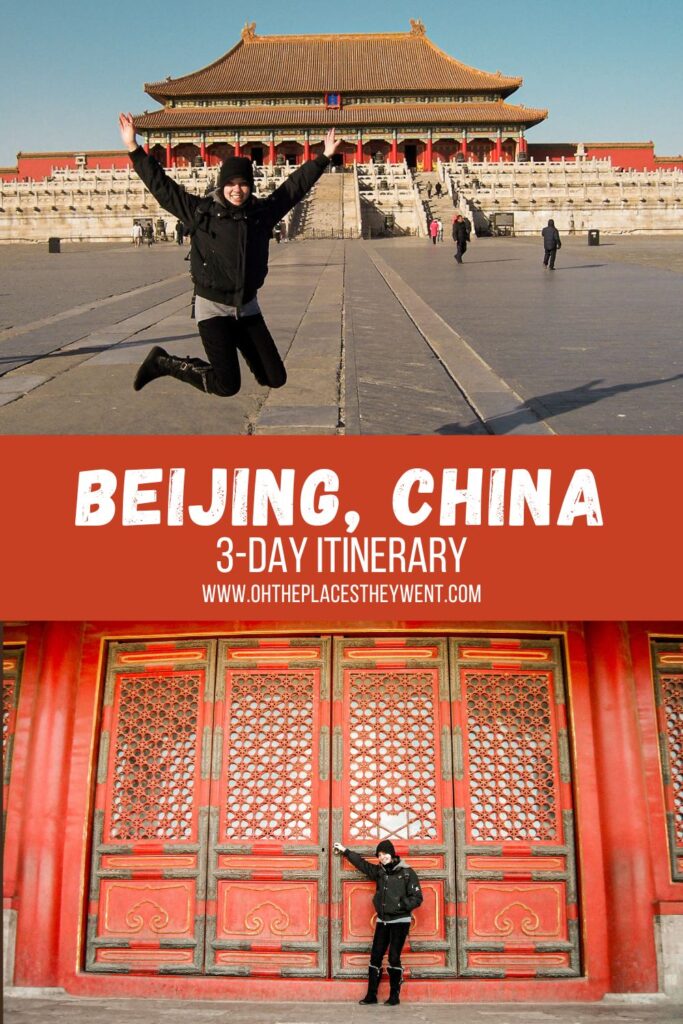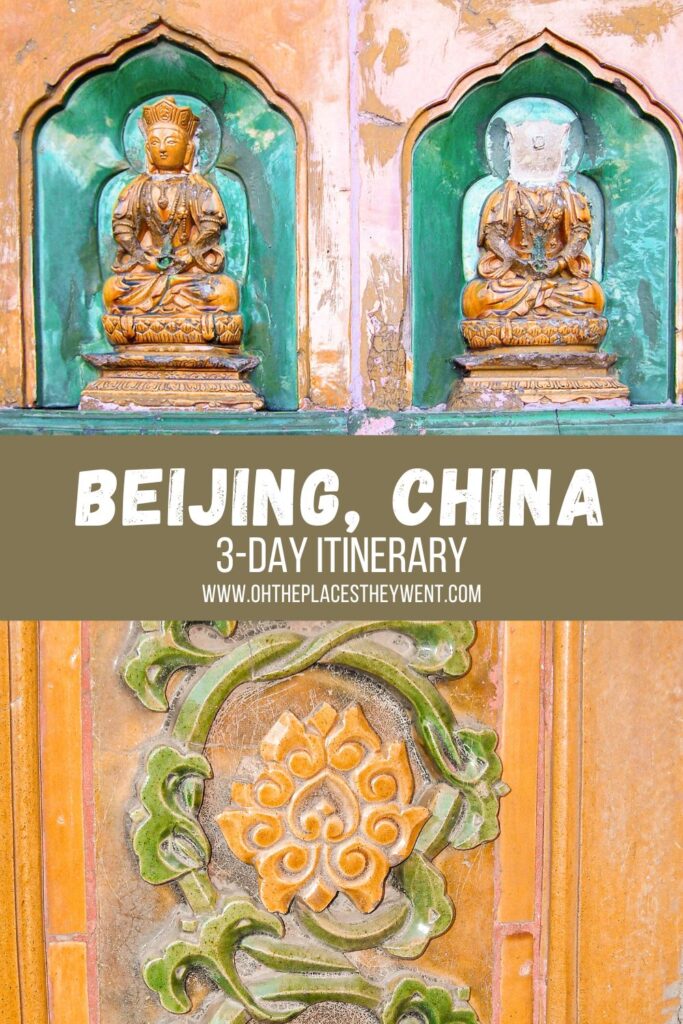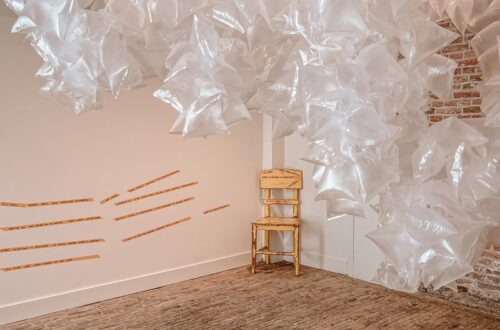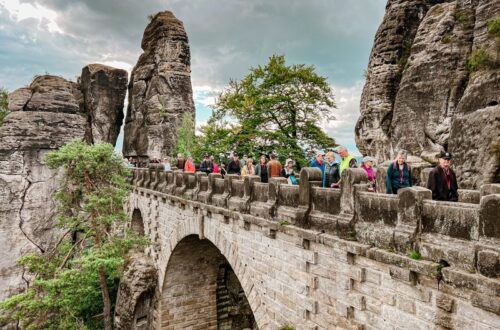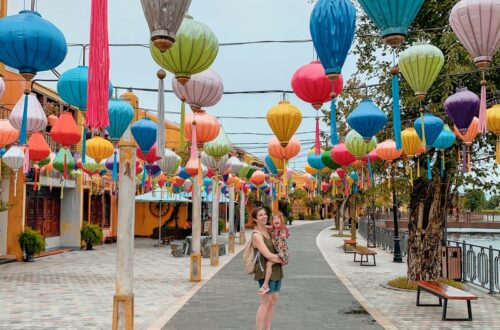A 3-Day Beijing Itinerary: Explore More Of China
If you’re planning a weekend in Beijing and wondering what to see and do, we’ve got you covered with this three-day itinerary. Beijing, the vibrant capital of China, is a city that seamlessly blends ancient traditions with modern marvels and if you visit in the middle of winter like we did, you might get to see everything practically on your own.
Over a three-day weekend, we explored iconic landmarks like the Forbidden City, marveled at the grandeur of the Great Wall of China, and immersed ourselves in the bustling atmosphere of the historic Hutongs. Get ready to plan your trip to Beijing and follow this itinerary to help you through it all. Three days is a great amount of time to spend in Beijing, China and you can cover a lot. Get ready to explore!
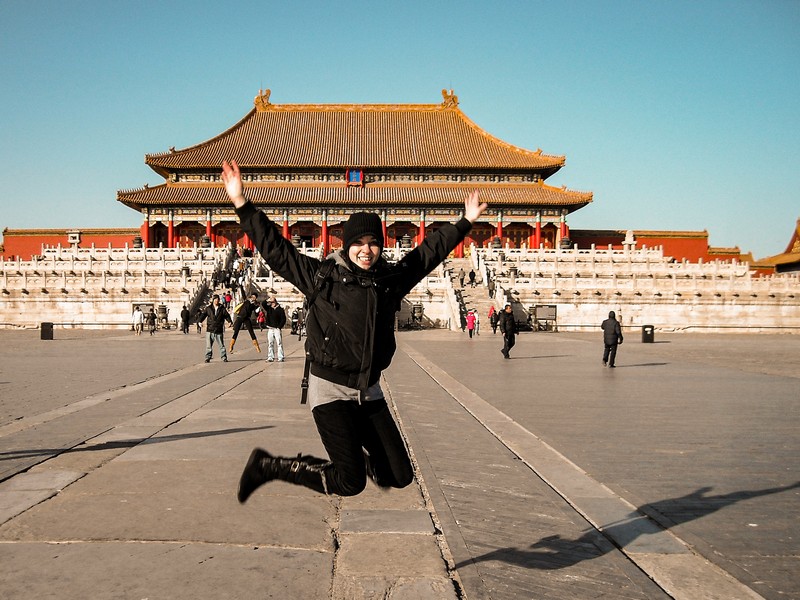
Get ready for a 3-day trip to Beijing, China:
(This post contains affiliate links, which means I receive a certain percentage of a sale if you purchase after clicking at no cost to you. Thank you for your support.)
Where To Stay
Legendale Hotel Wangfujing Beijing
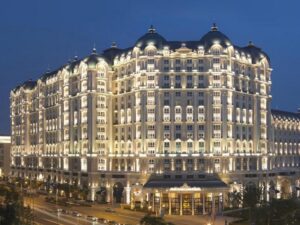
Experience a whole new level of luxury in this platinum 5-star property located in the heart of China’s capital city. Without a doubt, Legendale Hotel Wangfujing Beijing is situated on the perfect spot in town, where everyone will have an enjoyable time, whether you’re with your family or with your partner. A few minutes away from the property are some of Beijing’s must-see attractions, including the Tiananmen Square, the Forbidden City, and the Drum and Bell Towers.
Book a room on Booking.com or on Agoda.com
Jen Beijing by Shangri-La
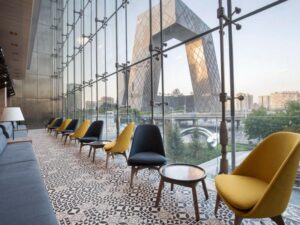
At Hotel Jen Beijing, every effort is made to make guests feel comfortable. To do so, the hotel provides the best in services and amenities. In addition, all guestrooms feature a variety of comforts. Check out this chic stay and you won’t be sorry. The hotel offers wonderful recreational facilities such as yoga room, fitness center, sauna, indoor pool, spa to make your stay truly unforgettable. Hotel Jen Beijing is a smart choice for travelers to Beijing, offering a relaxed and hassle-free stay every time.
Book a room on Booking.com or on Agoda.com
How To Get Around
Subway: The Beijing subway system is modern, safe, and cheap and fairly easy to use. We did stop at an info desk to ask for help once and they were able to help get us pointed in the right direction. It is a pretty massive system though so if you’re not used to a big subway system, get ready for that.
Taxi: Taxi drivers don’t speak much or any English in our experience, but with a picture of everything we wanted to see or the address in Mandarin written by the hotel staff, we were able to get around just fine with a driver. Taxis are pretty budget friendly too so don’t be afraid to hop in and see how far you can get.
Get A Guide
If you’re headed to Beijing, getting a guide or joining a tour is highly recommended as navigating the city can be a bit difficult. While we were out and about traversing, it was certainly not easy and we no doubt would have seen more had we joined a tour or gotten a guide to help us. There are a few tours that I think look great from my friends over at Klook. Check them out if you have time and want to see all that you can see in Beijing:
- Day Tour to see The Forbidden City, Tiananmen Square and the Olympic Park
- Day Tour to see The Forbidden City and the Temple of Heaven Summer Palace
- Day Tour to see The Forbidden City, Tiananmen Square, Temple of Heaven and have a Quanjude Duck Tasting for lunch
- Day Tour to see the Badaling Great Wall by helicopter and then tour Tiananmen Square and the Forbidden City
- A Day Trip including the Summer Palace, the Forbidden City, and the Temple of Heaven
- A Day Trip including the Summer Palace, Beijing Zoo, and the Lama Temple
Day 1
The Forbidden City
Start your day by exploring the grandeur of the Forbidden City, a UNESCO World Heritage site. Discover the impressive palaces, halls, and courtyards that once housed Chinese emperors. Take your time to admire the intricate architecture and learn about the rich history of imperial China.
The Forbidden City, or Zijin Cheng, is a must see on any list of sites in Bejing and is massive so prepare yourself to stay there for a few hours. As the former imperial palace from the Ming dynasty up until the end of the Qing dynasty, it was the center of the Chinese government for almost 500 years.
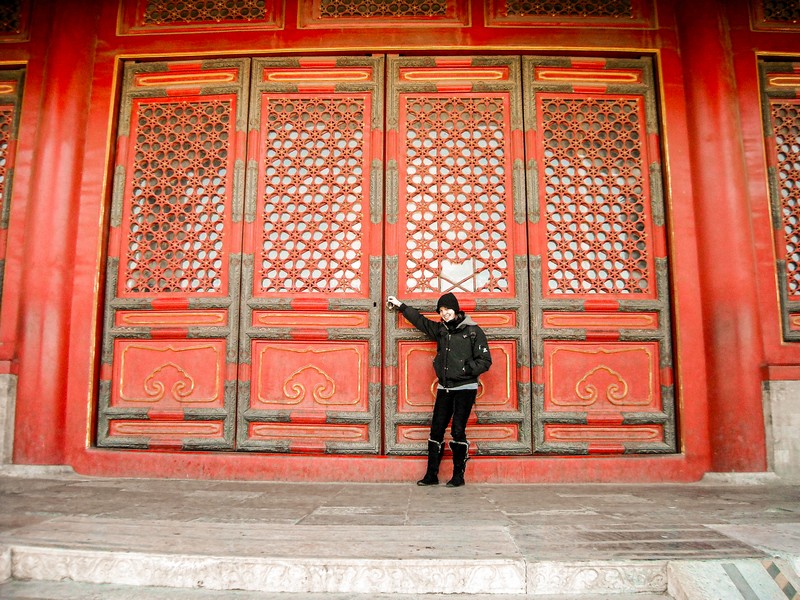
The complex was built from 1406 to 1420 and boasts 980 buildings that took more than a million people to build and covers 180 acres of land. The Forbidden City became an UNESCO site in 1987 and is the largest collection of preserved ancient wooden structures in the world.
For tourists, the route is set up so that you must enter from the Meridian Gate (Wumen) at the southern end of the complex near Tienanmen Square and must exit at the Gate of the Divine (Shenwu Men) at the northern end which means there is a lot of walking involved in seeing the site. Definitely make sure you wear good shoes.
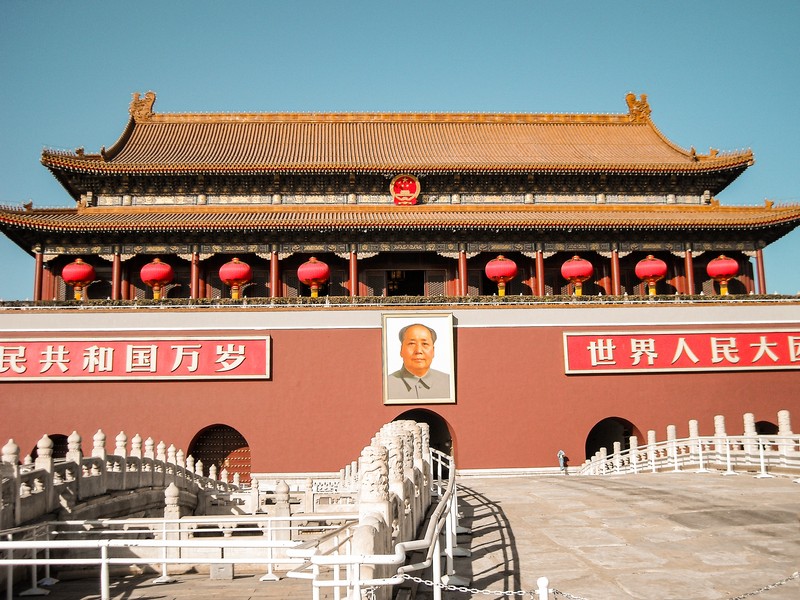
High crimson walls surround the complex and the buildings inside are massive as well. Wandering around the corridors between the buildings can make you feel somewhat like a mouse in a maze going this way and that wondering how far you’ve gotten and if you’re any nearer to the end after that last turn.
We couldn’t help but notice the intricate details from the ceramic carvings and tiled roofs with statues everywhere we looked. The yellow, the color of the Emperor, glazed tile roofs beamed in the sunlight that gave us no warmth. Interestingly there are only two buildings in the complex that don’t have yellow tiled roofs and those are the library which has black tiles which are associated with water so as to prevent a fire and the other is the Crown Prince’s residence which has green tiles associated with wood and thus represent growth.

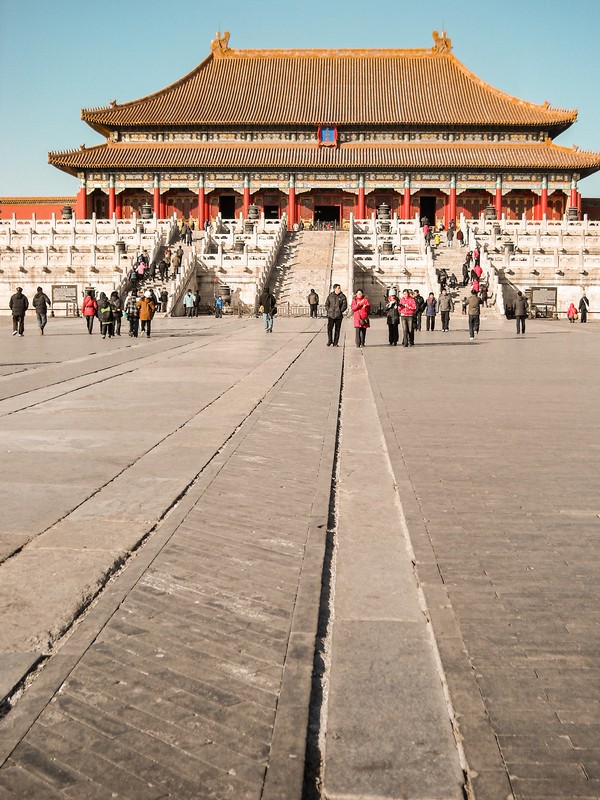
The Forbidden City was the seat of the Ming Dynasty for 224 years from 1420 until Li Zicheng, who proclaimed himself emperor of the Shun dynasty, captured the palace. He soon fled and the Ming general Wu Sangui along with Manchu forces took over. The Shunzhi Emporer took power and thus the Qing dynastic rule in China began.
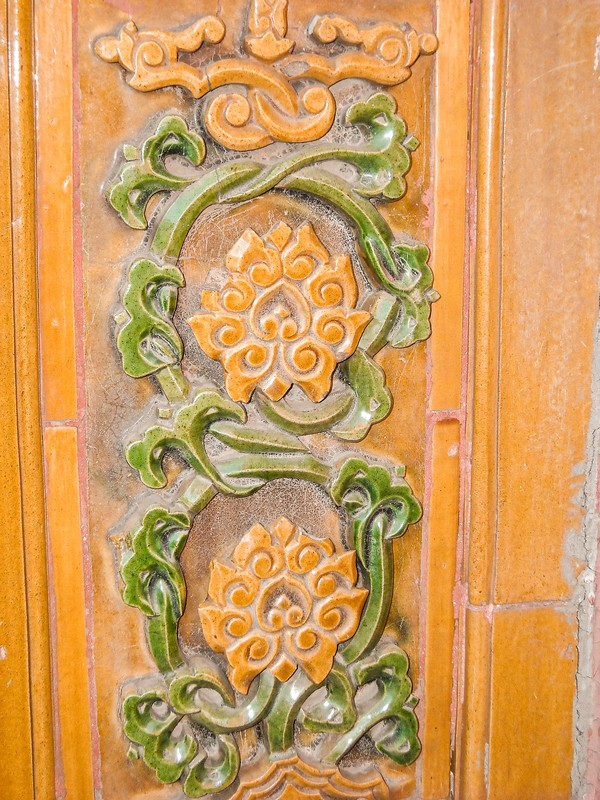
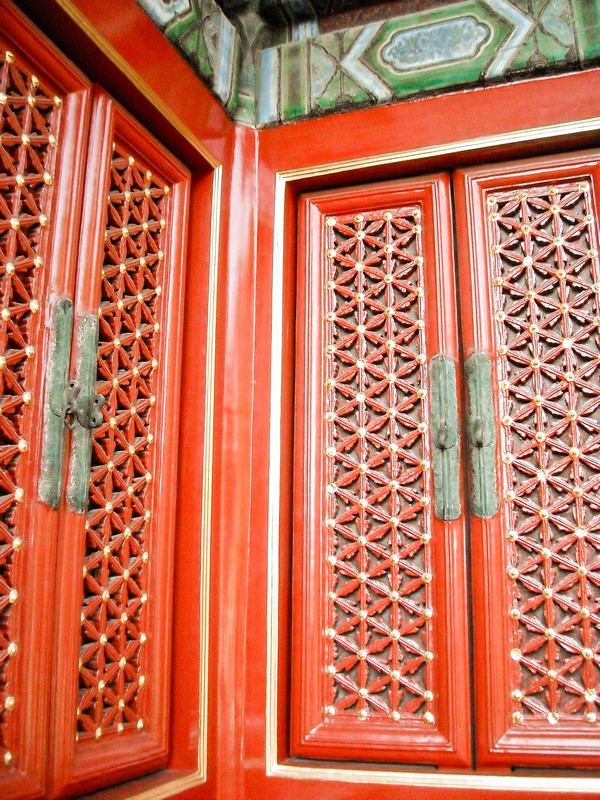

Home to 24 emperors, 14 Ming and 10 Qing, the Forbidden City was the political center of China up until 1912 when the last emperor of China, Puyi, abdicated his throne.
The grandiose architecture and ornate carvings and decor gave the impression that the royalty of years ago set out to press upon people and that was that this was the realm of an emperor that was sent to rule from heaven.

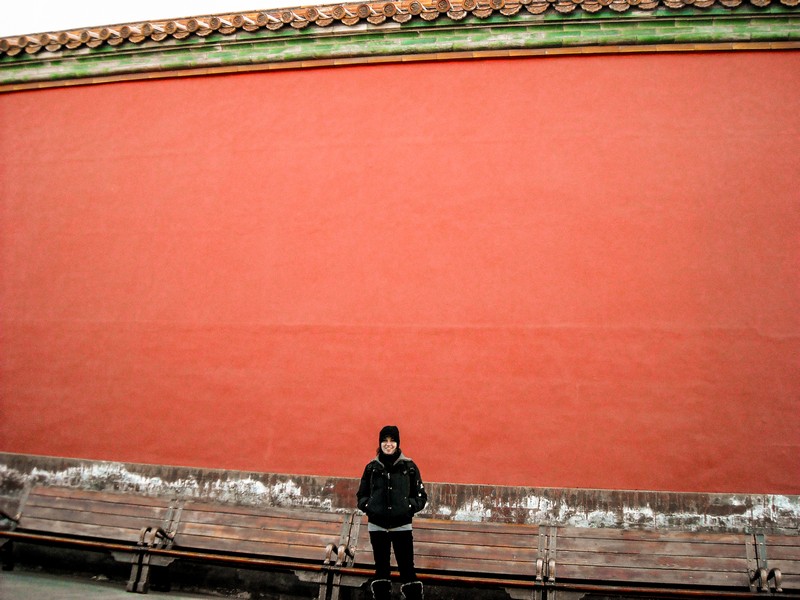
In traditional Chinese astrology the name of the Forbidden City, or Zijin Cheng, refers to the North Star which is where the celestial emperor was said to live. The Forbidden City was the earthly counterpart of that heavenly home and they went to many lengths to ensure it stood up to that mighty task. The Forbidden City was our introduction to Beijing and it prepared us for the immensity of everything else we would see in and around the city in the coming days.
- Address: 4 Jingshan Front St, Dongcheng, Beijing, China (北京市东城区景山前街4号 邮政编码)
- Hours: Tuesday – Sunday: 8:30am ~ 4:30pm
- Admission: April 1 ~ October 31: 60 yuan; November 1 ~ March 31: 40 yuan
- Children under 120cm are free of charge.
Lunch
Enjoy a delicious lunch at a local restaurant near the Forbidden City. Sample traditional Beijing dishes such as Peking duck, hotpot, or dumplings depending how hungry you are.
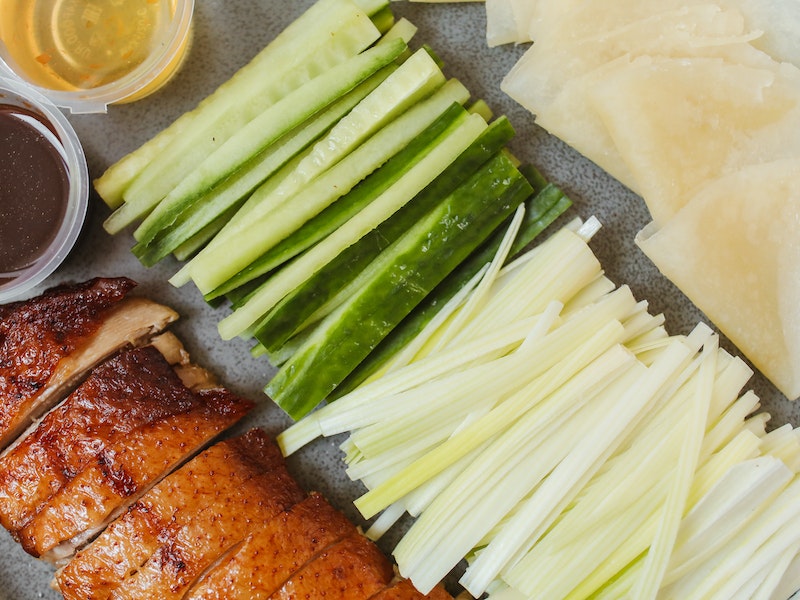
Recommended restaurants nearby:
- Siji Minfu: Have your fill of Peking duck at this restaurant renowned as one of the best places to have the dish in Beijing. There may be a line, but it’s worth the wait.
- Address: 32 Dengshikou W St, Dong Dan, Dongcheng Qu, Beijing Shi, China
- Chinese: 北京市东城区东单灯市口西街32号 邮政编码
- Dong Lai Shun: A Beijing-style hotpot restaurant, especially great for groups.
- Address: WC76+MJR, Wangfujing Ave, Wangfujing, 西城区 Beijing, China
- Chinese: 北京市西城区王府井王府井大街 邮政编码
Yonghegong Tibetan Buddhist Lama Temple
Visit the Yonghegong Tibetan Buddhist Lama Temple, also known as Lama Temple or Yonghe Temple. The Yonghegong Tibetan Buddhist Lama Temple is the biggest lamesary in Beijing.
It was built in 1694 as the residence for Prince Yong of the Qing Dynasty. When the prince became emperor, he changed the residence into a temporary palace called Yonghegong which means palace of harmony and peace and his successor changed the residence into the lama temple that is now.
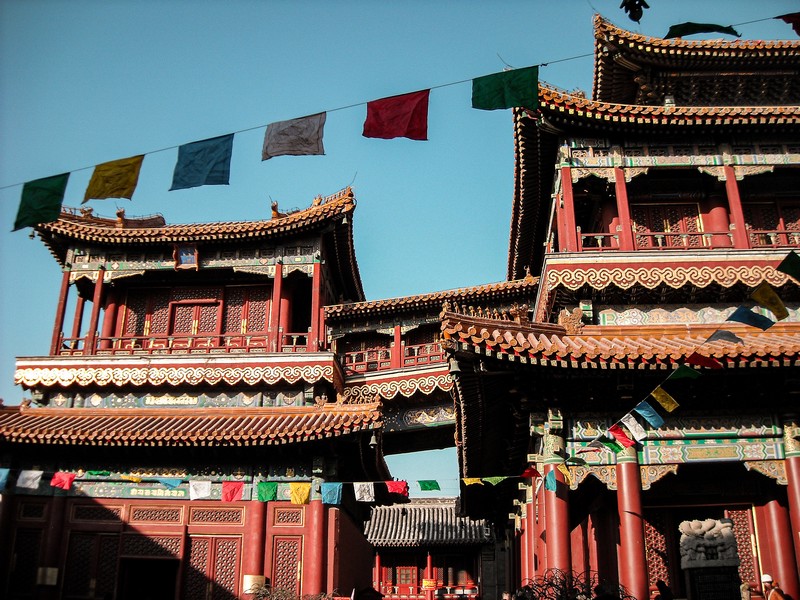
Prince Yong, who had become Emperor Yongzheng, was placed in the temple upon his death in 1735 and his successor, Emperor Qianlong gave the temple imperial status. The status was shown through the changing of the turquoise tiles to yellow tiles which were reserved only for the emperor. You can learn more about why this temple is so important on China Highlights.
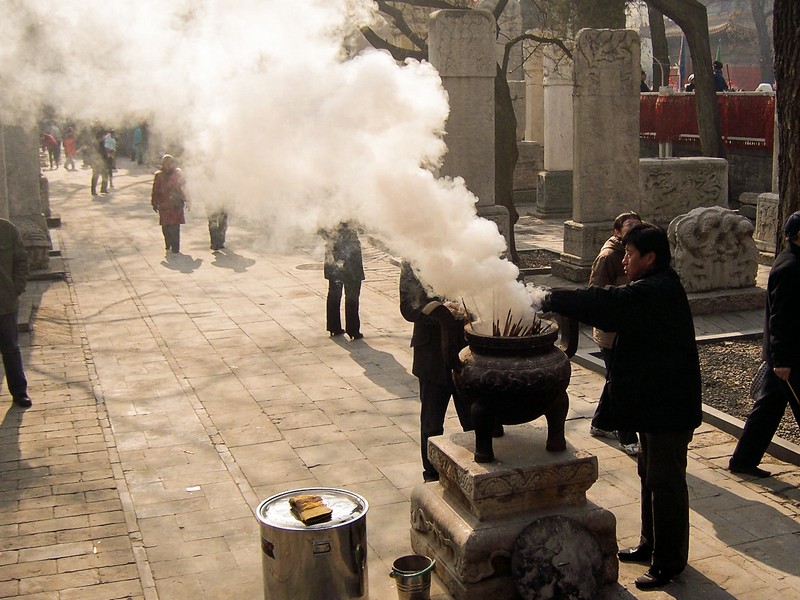
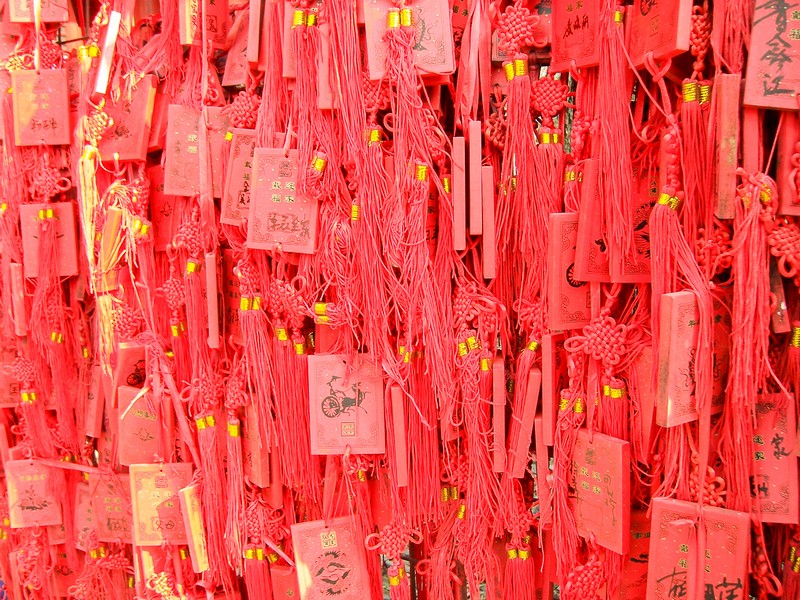
The grounds of the temple and surrounding area were bustling with people, clouds of smoke and vendors selling all sorts of things. Most likely due to the coming of the Lunar New Year, crowds of people came this way and that lighting sticks of incense and praying while we took the whole scene in.
- Address: 12 Yonghegong Dajie. (北新桥雍和宫大街12号)
- Hours: November – March: 9:00am ~ 4:00pm; April – October: 9:00am ~ 4:30pm
- Admission: 25 yuan
- Children under 120cm are free of charge.
Nanluoguxiang
Take a leisurely walk along Nanluoguxiang, a historic street lined with traditional hutongs, residential areas, and trendy shops. Explore the unique boutiques, enjoy street food snacks, and soak in the vibrant atmosphere of this popular Beijing neighborhood. The day was a lot of walking, so take a seat wherever your feet carry you.
This is the most well restored hutong to visit but that also means it can be busy along the narrow alleys.
Some food you can find there includes Beijing Zhajiangmian, a savory soybean and pork noodle dish, Beijing roast duck, fried pancakes, and steamed buns. See which shop catches your eye as you walk.
- Address: Di’anmen East Street, Dongcheng District, Beijing (北京东城区地安门东大街)
- Directions: You can reach Nanluoguxiang Hutong by taking the Beijing subway and alighting at Nanluoguxiang Station (Line 6). From there, it’s just a short walk to the entrance of the hutong.
Day 2
The Great Wall of China: Mutianyu
Squeezing in a trip to the Great Wall of China is an absolute necessity even in the winter. The closest and easiest section to get to from Beijing is Mutianyu and is the area that we opted for. However, you can go further if you want. Check out that guide linked above for the numerous parts of the wall you can find and how to get to them.
Take a cable car or hike up to the wall and be rewarded with breathtaking views of the surrounding mountains. Walk along the well-preserved ancient fortifications, explore the watchtowers, and capture memorable photos.
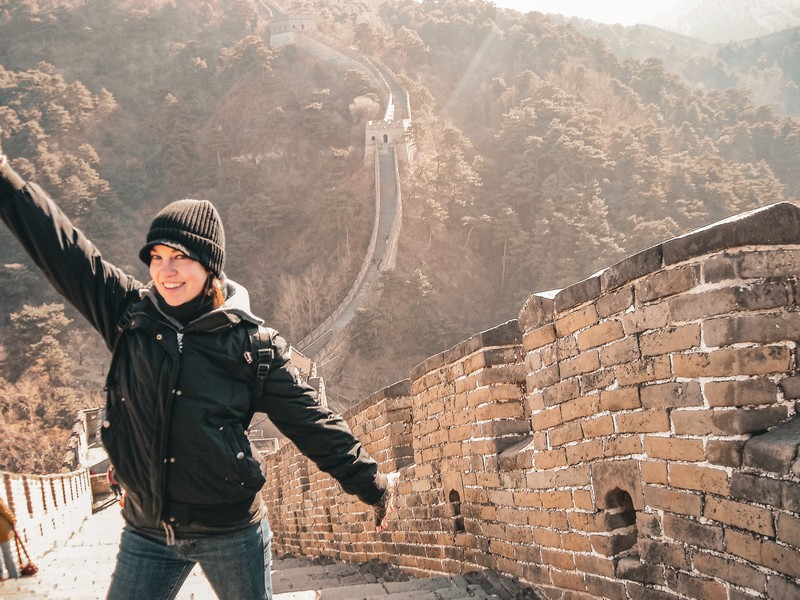
The Great Wall of China is an absolute must-do for any visitor to Beijing, China and this is the day to take all its grandeur in and see why it’s worth it. Even in the middle of winter at peak chill, we were struck by the size and on top of that, got to explore the wall practically on our own. No crowds at all as you might see in some summer photos of this section of the wall.
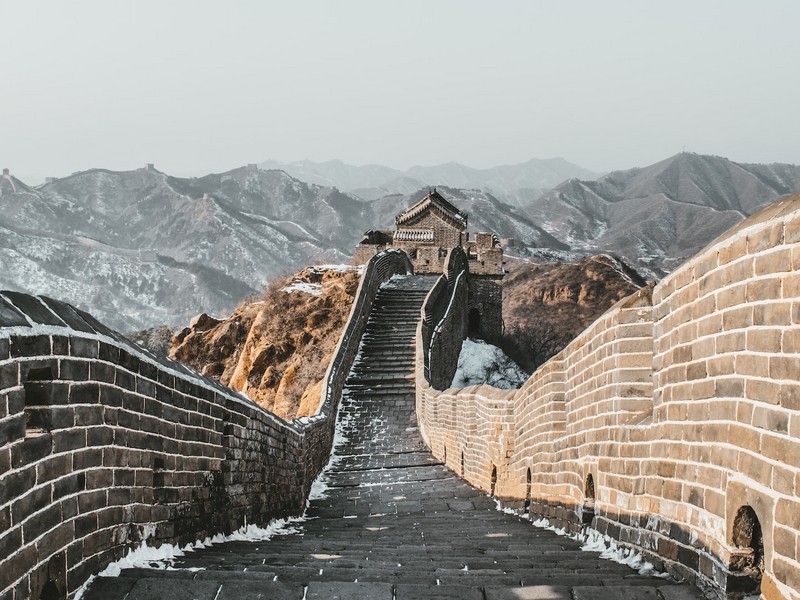
- To reach the Great Wall, there are several convenient transportation options available:
- Tourist Buses: Aside from tours through companies, there are also buses for tourists that go from Beijing out to the wall.
- Qianmen Tourist Bus Line
This bus line runs directly to Mutianyu Great Wall from Qianmen Tourism Distribution Center. The bus departs at 09:00 from Qianmen and 09:30 from Shaoyaoju; the total travel time is 2 – 2.5 hours with the ticket fare of CNY30.
- Qianmen Tourist Bus Line
- Book a Driver: Consider booking a driver through services like Klook to ensure a relaxed and stress-free journey. This option provides convenience and eliminates the challenges of language barriers. Private driver to Mutianyu: Book through Klook
- Join a Tour: Opting for a tour allows you to travel with a group and enjoy the wonders of the Great Wall together. This is a great choice if you prefer a guided experience and to have a guide so you can ask questions and learn more about what you’re seeing.
- Book a round trip bus pass from downtown Beijing to the Mutianyu Great Wall of China through Klook or through Get Your Guide
- Tourist Buses: Aside from tours through companies, there are also buses for tourists that go from Beijing out to the wall.
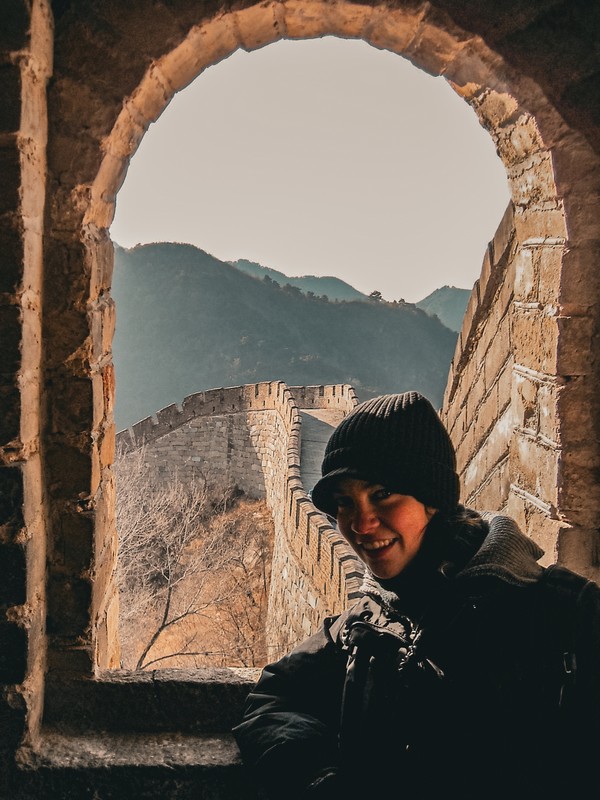
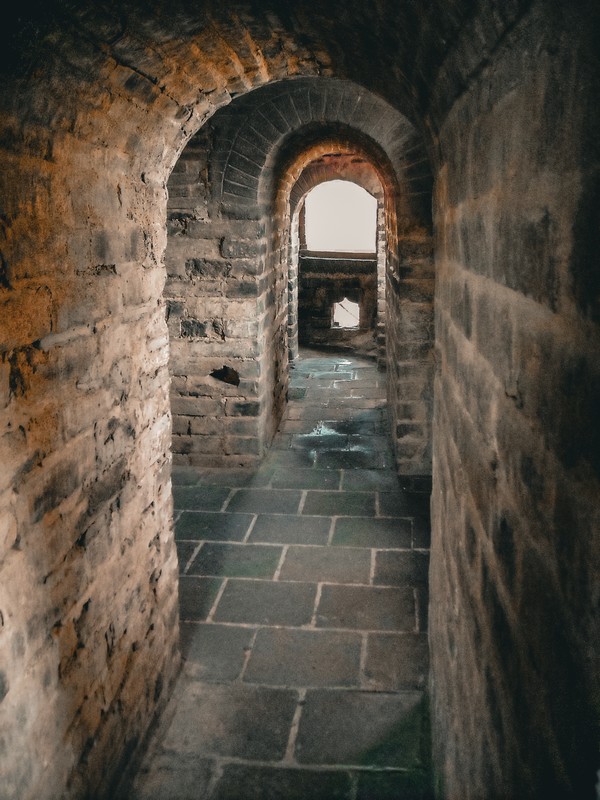
- Hours: 8:30AM ~ 5:00PM
- Admission: Adults: 40 yuan; Children: 20 yuan; Children under 6 are free.
- Cable Car Info: You can take a cable car up to Watchtower No. 14. The lower station is near the North Entrance and is a safer option than the toboggan to get down for small children and senior citizens.
- Adults: Single Trip: 100 yuan, Round Trip: 140 yuan
- Children: Single Trip: 50 yuan, Round Trip: 70 yuan
- Chairlift/Toboggan Info: We had opted for the cable car up and took the toboggan down which worked well and was fun for us. But you can go up and down at the toboggan location as well as there is a chairlift there. You can find this at the Zhengguan Terrance, or Watchtower No. 6, near the South Entrance.
- Adults: Single Trip: 100 yuan, Round Trip: 140 yuan
- Children: Single Trip: 60 yuan (There aren’t single trip options for children, but they can get round trip tickets for 60 yuan.)
Traditional Chinese Theater
After day at the Great Wall of China, you might just want to sit back and relax a bit so end the day with a visit to a traditional Chinese theater, such as the Beijing Opera or acrobatic show. The Chaoyang Acrobatics Theater is the oldest acrobatics theater in Beijing and have nightly performances at 7:15pm so there are quite a few options to enjoy the evening. Enjoy the captivating performances, colorful costumes, and cultural displays, giving you a glimpse into China’s rich artistic heritage.
- Book Tickets: Get tickets for the Acrobatic Show with hotel-transfer to make it even easier with Get Your Guide.
Wangfujing Snack Street
If you’ve got some energy, stop by Wangfujing Snack Street to get a bit of food on the way home. Experience the vibrant atmosphere of Beijing’s night markets. Visit the famous Wangfujing Snack Street, where you can sample a wide variety of local street food, from exotic snacks to traditional delicacies. There is a lot to try if you’re an adventurous eater, but some good options for the pickiest of eaters. Have some fun and see what you want to try.
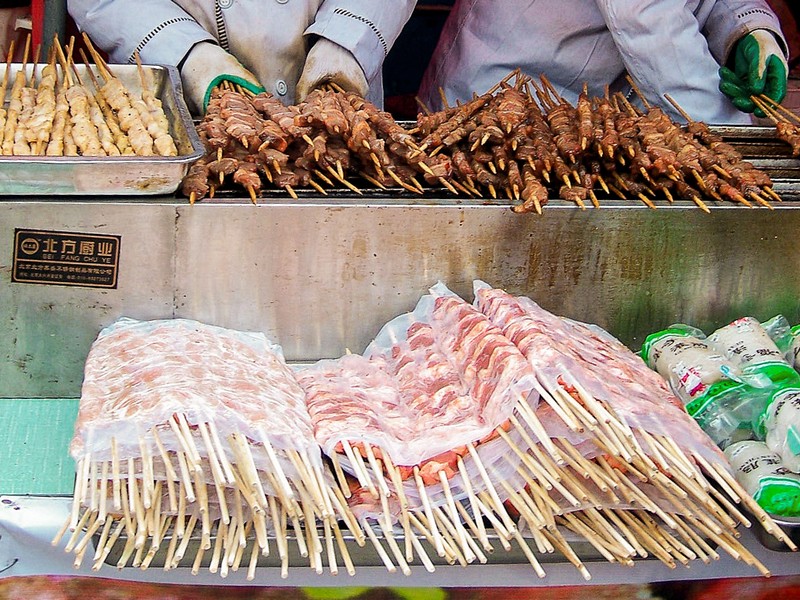
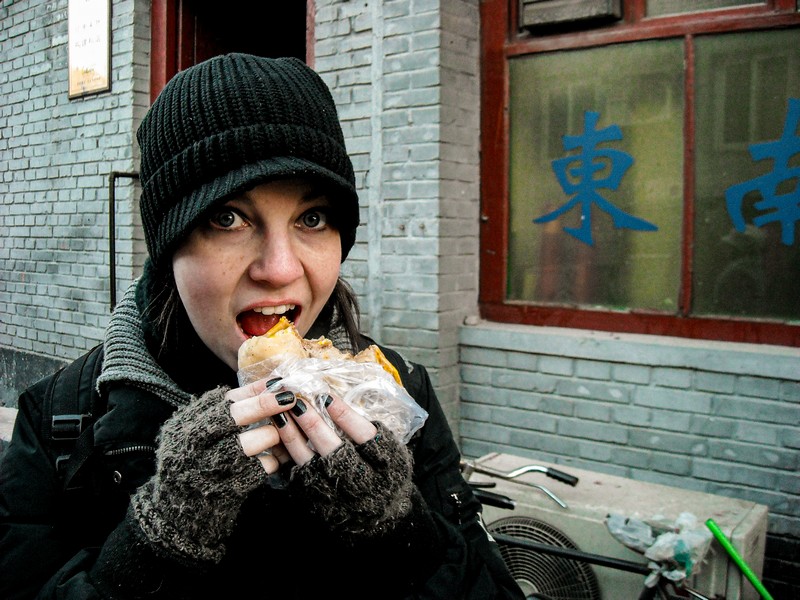
The street is known for its diverse range of food. You can be on the lookout for savory dishes like jianbing, a crispy, egg-filled crepe, fried scorpions, and stinky tofu. For something sweeter, there are also plenty of options, including candied fruits, bubble tea, and sugar-coated hawthorns.
- Directions: The street runs parallel to Wangfujing Pedestrian Street, one of the most popular shopping areas in Beijing, and is easily accessible by public transportation, with the Wangfujing subway station located just a short walk away.The nearest subway station is Wangfujing on Line 1, one stop east from Tiananmen Dong Station.
- Hours: 9:00am ~ 11:00pm (During peak periods, it can be open earlier and/or later as well though.)
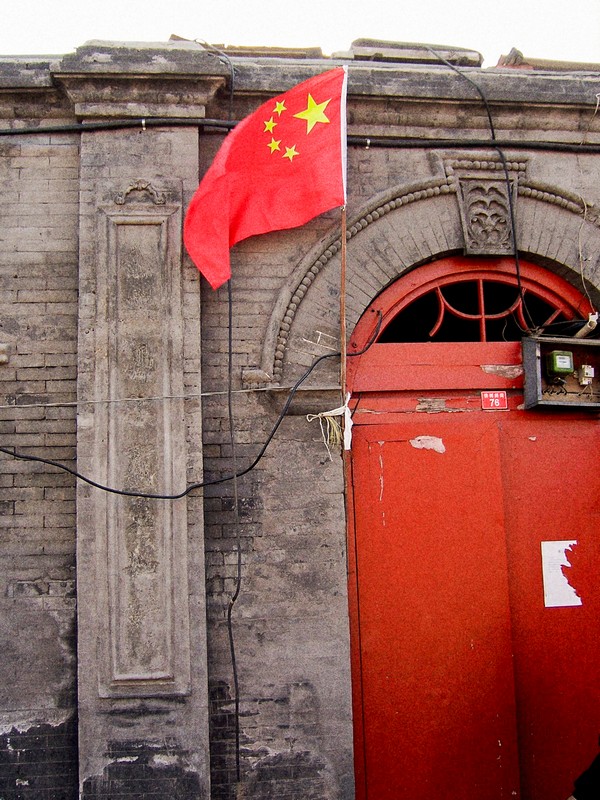
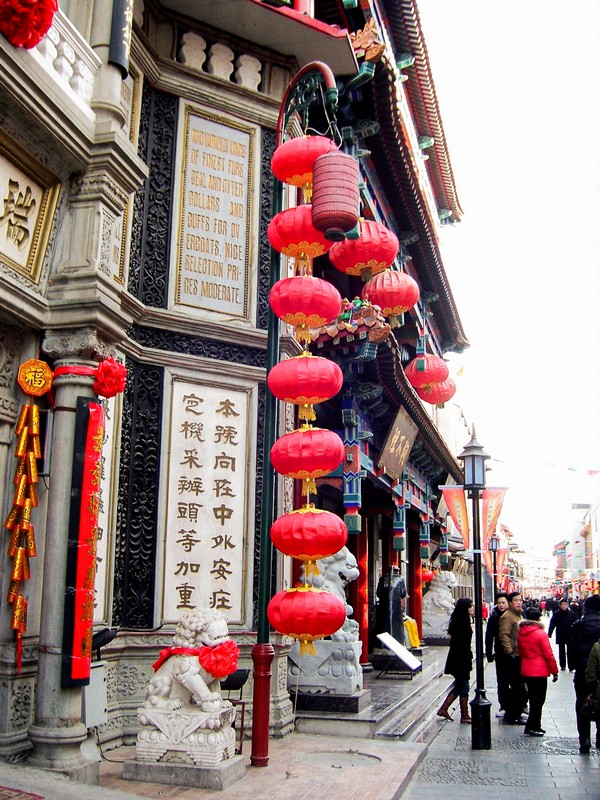
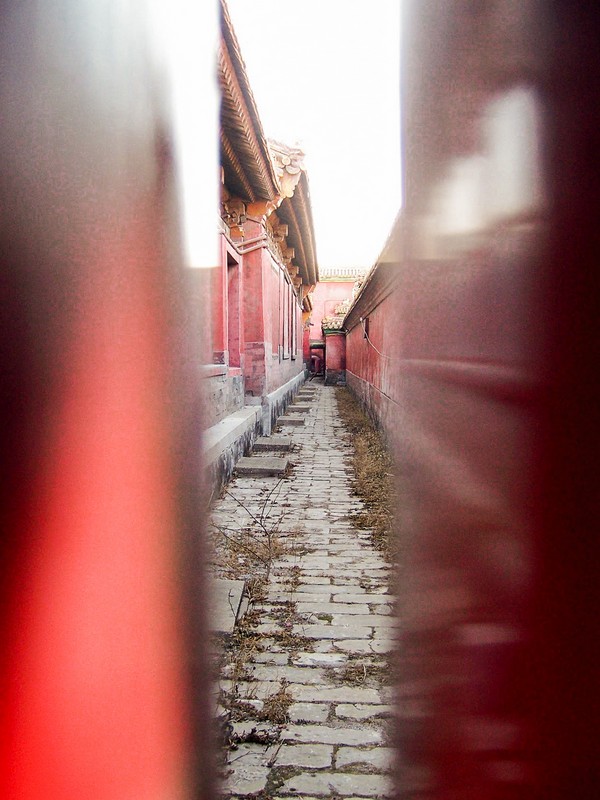
Day 3
The Summer Palace
A tranquil retreat located on the outskirts of Beijing. It seems just as large as the Forbidden City. Explore the sprawling gardens, visit the iconic Marble Boat, and stroll along the picturesque Kunming Lake. Originally named The Garden of Clear Ripples, the Summer Palace, or Yihe Yuan, in Beijing, China was built in 1750 and was used as a pleasure garden for emperors and empresses.
The majority of the site is the massive Kunming Lake that covers three-fourths of the area. To get a spectacular view of the water that ripples and the rest of the site from high above, hike up the many steps of Longevity Hill enjoying the halls and pavilions on the way up.
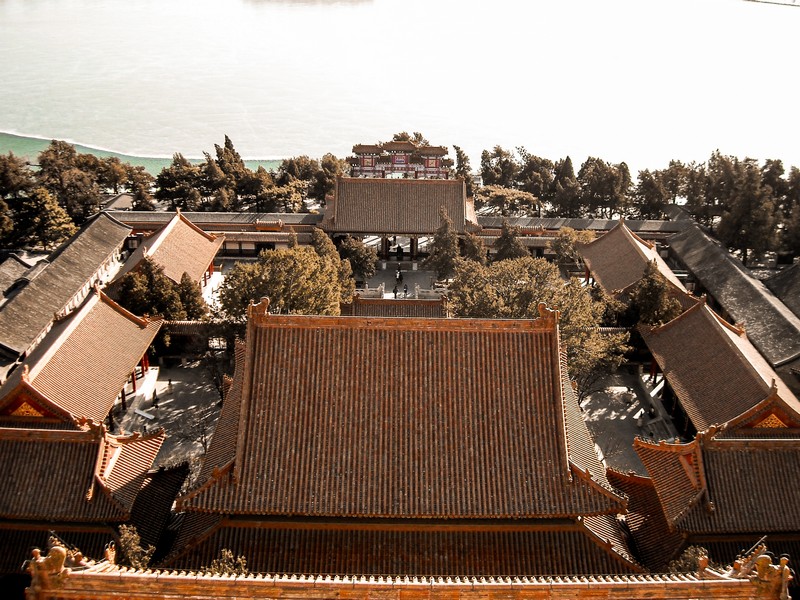
Though, if you visit in the middle of winter like we did, you will see the lake covered in ice and sparkling under the sun from high above. In contrast, if you walk down the back side of the hill you are met with the simple beauty of the natural garden surroundings.
We were met with a few more people at this site than we’d seen at the Great Wall or even in the Forbidden City but still for the most part we had the corridors that wound this way and that to ourselves. Though visiting a place in the middle of winter has many downsides, mostly the fear of frostbite and toes frozen to boots, there are some upsides including empty or near empty tourist sites. Who doesn’t like wandering through old palaces alone daydreaming of a time when people actually lived in them?

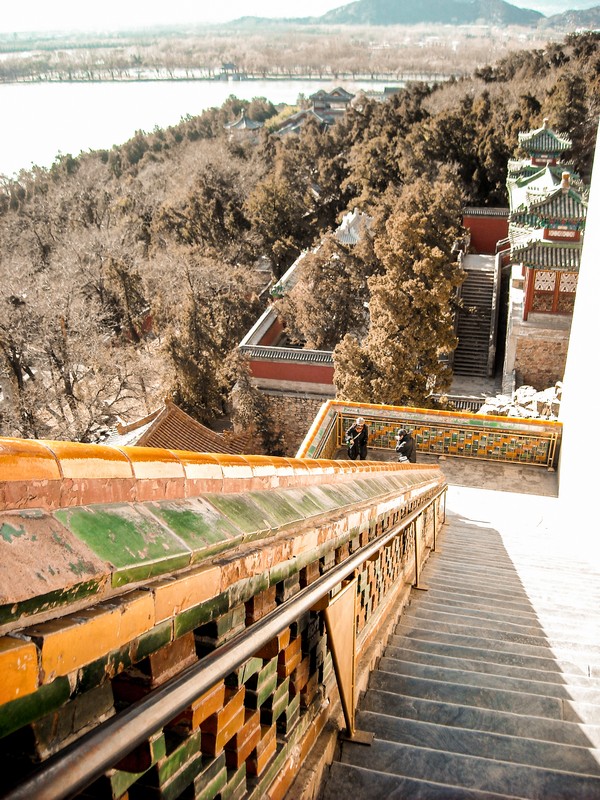

This particular palace was a dream to wander through. The corridors were intricately decorated and the photo-ops aplenty. Even in the winter, the summer vibes were a flowing.
Built in 1750, the palace was destroyed in 1880 and plans to rebuild began in 1886 with misappropriated funds. The Empress Dowager Cixi took the money designated for the Chinese navy in order to reconstruct and enlarge the palace complex. Unfortunately, just six years later, China was thrust into the First Sino-Japanese War which they lost and no doubt those funds would have been helpful had they been used appropriately.

In 1894, the empress dowager had large-scale plans drawn up to celebrate her 60th birthday but due to the war she was forced to cancel her elaborate schemes making it clear that the 3 million taels of silver she’d used had been for naught.
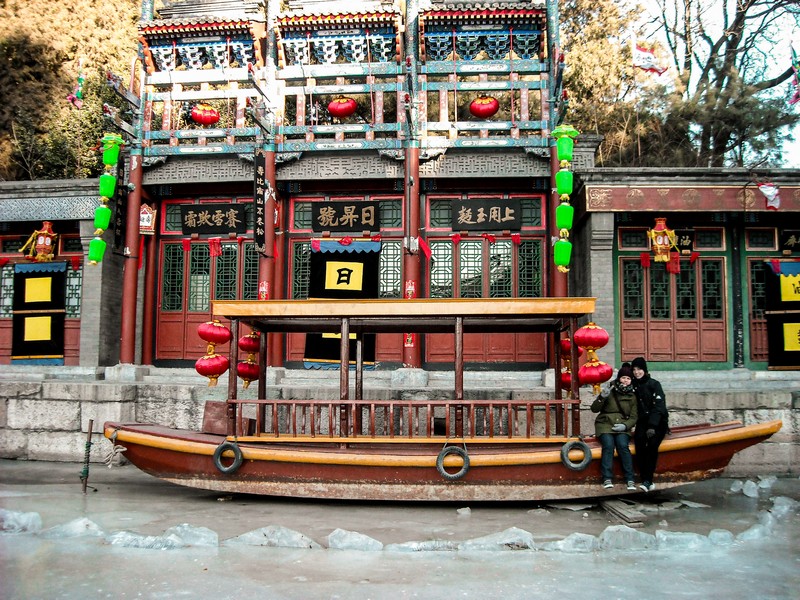
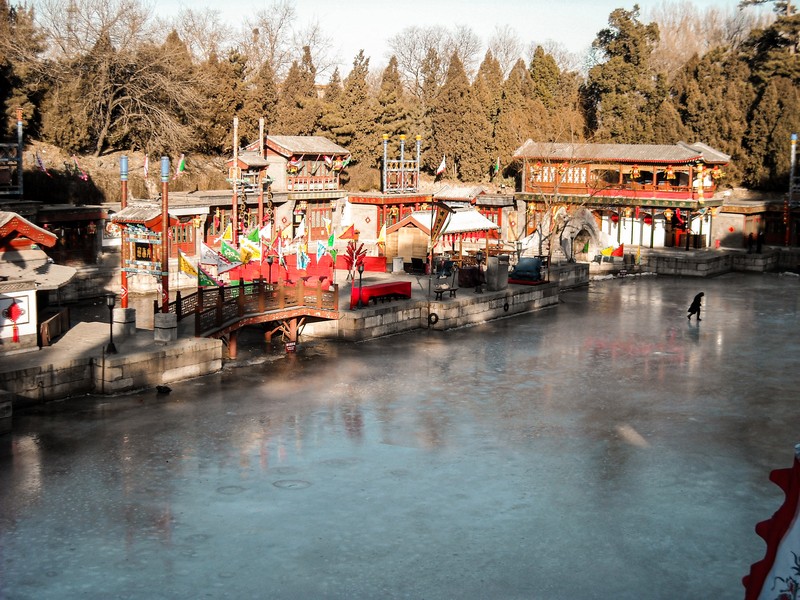
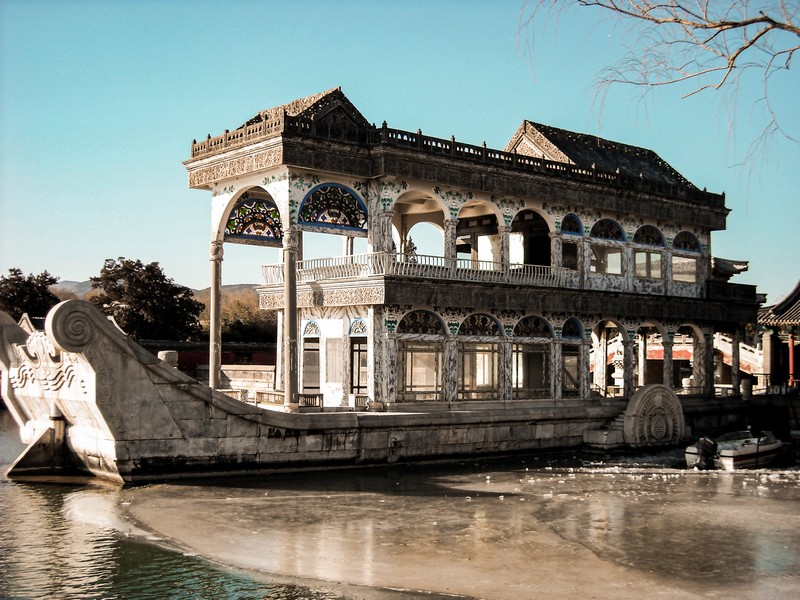
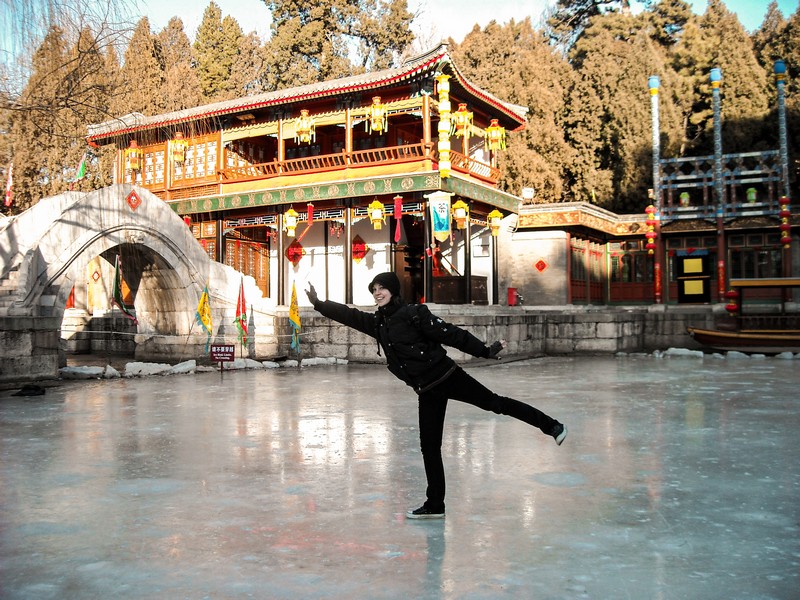
The names of the buildings seem to have some dreamy ideas behind them with titles such as the Cloud-Dispelling Hall, the Sea of Wisdom Temple and the Hall of Happiness and Longevity to name just a few. They live up to their name in beauty and intricate detail and one can only hope that just a visit to them will lead to wisdom, happiness and longevity.
- Transportation: Beigongmen Station on line 4, exit D. Walk to the west and enter the palace from the north gate. OR Bagou Station on line 10, get a taxi from any gate and go to the New Palace Gate or walk the 1.5 km to the palace.
- Admission: Low Season (November ~ March): Entrance ticket (not good for paid attractions inside of the complex): 20yuan; Through ticket (includes admission to some paid attractions inside): 50yuan; High Season (April ~ October): Entrance ticket (not good for paid attractions inside of the complex): 30yuan; Through ticket (includes admission to some paid attractions inside): 60yuan
- Buy Online: Purchase the ticket through Klook and you can get a discount on admission.
- Guided Tours: If you’d like a guide to really give you all of the history and information as you walk, book a guide on Get Your Guide.
- Hours: April 1 ~ October 31: 6:30AM ~ 8:00pm; November 1 ~ March 31: 7:00AM ~ 7:00PM
- Last tickets sold two hours prior to closing.
Lunch
After walking for the length of the morning, we exited from the North Palace Gate to find food. There are convenience stores with corn and sausages and buns and a few restaurants to choose from. There are also cup noodles. This was our least focused sit-down meal, but was a good filler as we were hungry and cold from our adventure. This was our last stop before heading to the airport to end our amazing trip to Beijing China and it suited us just fine.
Beijing, China can be overwhelming as all of the tourist sites seem big-size. They’re just huge so make sure you wear good walking shoes at all times. All of the walking will make you super hungry for all of the amazing food you can find though. Eat up, take adventures, and see what you can see!
Did you like this post? Pin IT!
